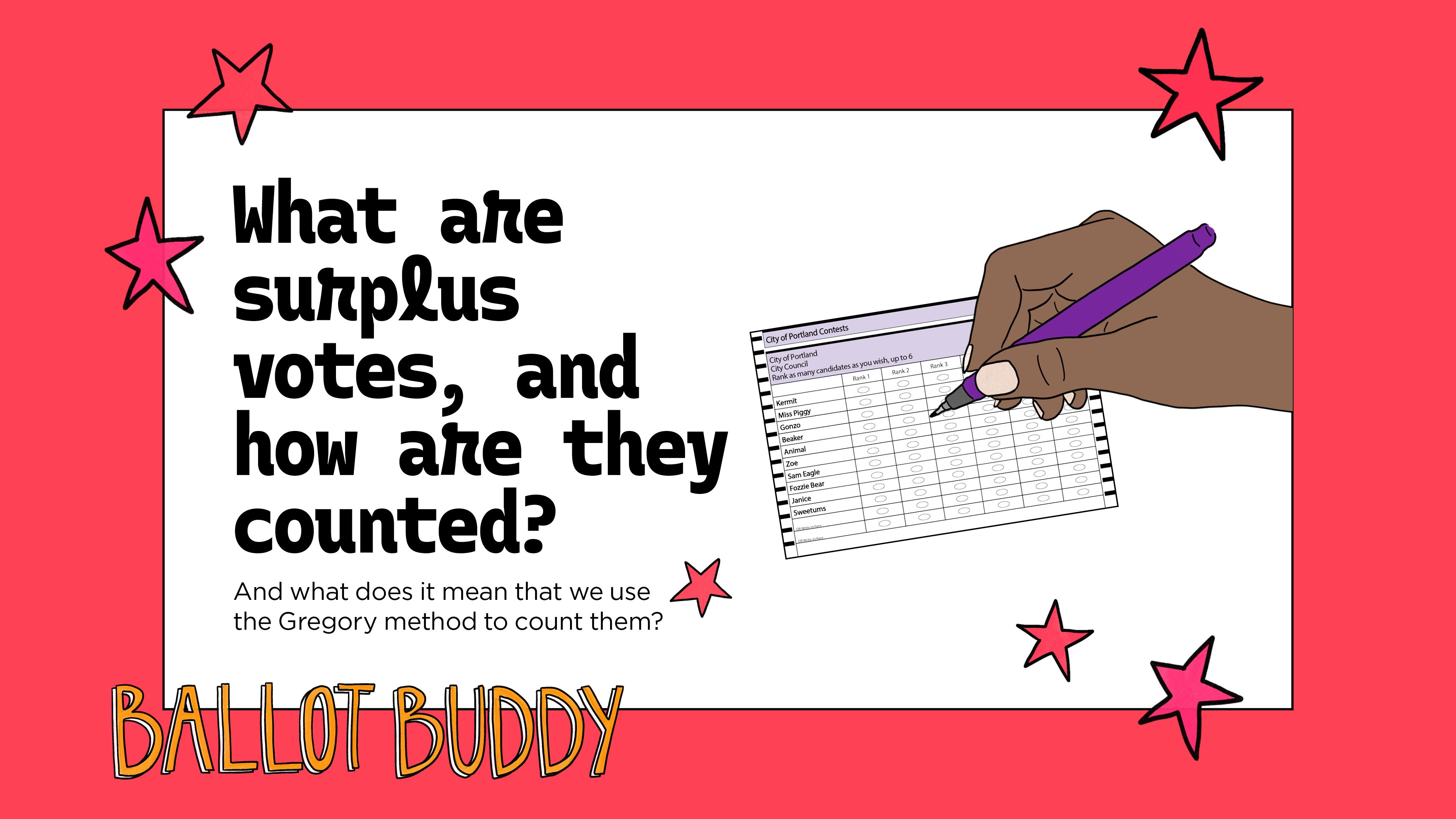The November election is 90 days away. Unless you’ve been at a silent meditation retreat for the past year, or sailing around Tierra del Fuego, you know that the Multnomah County ballot you get in the mail is going to look like nothing you’ve ever seen before.
But, to review, we’re gonna use ranked-choice voting. It’s pretty simple for races that have one winner, like mayor and city auditor. If your top candidate is the least popular, and no other candidate has 50% plus 1 vote, your second choice gets counted. If no one gets to 50% plus 1 after the second round of tabulation, the process repeats, until someone goes over the top.
But wait, there’s more. Each of the four new City Council districts will elect three councilors, and because of math, each one needs just 25% plus 1 vote to win. That bugs critics who question whether one-quarter of the vote is a true mandate. And, if necessary, these “multimember districts” make it harder to distribute second, third, fourth, fifth and sixth rank votes (we get six choices in the City Council races).
The issue here is a concept called surplus votes, which sound fishy to many voters, especially in this era of close elections and rampant charges of fraud.
These surplus votes don’t matter if three candidates all get at least 25% plus 1. If that’s the case, the race ends.
But with so many people on the ballot, that’s unlikely to happen. Surplus votes will almost certainly play a role, and in a multimember district, that gets complicated, so we’re going to fall back on a group of experts to explain it: Muppets.
In RCV, votes are counted in rounds. First choices are counted first. Say, after Round 1, Miss Piggy has 25% plus 1 (that winning total is called the “Droop quota,” by the way). Miss Piggy cracks the bubbly and kicks back to watch the next round. But if she gets, say, 40% of the vote, she doesn’t need the extra 15% to win. That excess is instead distributed to the second choice on those ballots. Those are her surplus votes.
But here is the big question: Which ballots do you take the second choice from? Say you and your roommate both ranked Miss Piggy as your first choice, but you chose Kermit the Frog as your second choice, while your roommate picked Animal. Is your vote counted for Kermit, or does your roommate’s get sent to Animal? This stuff drives the RCV critics crazy.
On its website, the Citizens’ Assembly on Electoral Reform in British Columbia (B.C. is a hotbed of election experimentation) says you could choose the ballots at random. But would it REALLY be random? And is random fair in a goddamn election?
We don’t have to worry about that, thanks to the “weighted inclusive Gregory method.” Strap in. This is exciting stuff. J.B. Gregory was an Australian math whiz who figured out something better. He suggested recounting ALL the second-ranked votes on Miss Piggy’s ballots, then distributing them to the second-ranked candidates proportionally.
But there’s a wrinkle: You have to make each of the second-place votes worth a fraction because you’re counting them all, and that includes votes that went to the winner. If you gave those winning votes full credit, then a first-rank Miss Piggy voter would get two votes. The fraction functions to remove the winning votes. RCV aims to give each voter greater chances of having their vote count, but only one vote can count.
Extra credit reading on the Gregory method: You get that fraction, or transfer value, of the surplus votes by taking all the votes that the winner got, subtracting 25% plus 1 of those, and dividing that number by the total number of first-rank votes that the winner got. That achieves the same thing as removing the ballots that already counted toward a winner.
Multnomah County is using the Gregory method to handle surplus votes. There are other methods: Webster/Sainte-Laguë, D’Hondt, Hare-Niemeyer, Meek, and Warren. Some of these are harder to understand than the Heisenberg uncertainty principle or the Higgs boson.
The decision to use Gregory was made by the Portland Charter Commission and required by charter amendments.
“That method is considered a best practice,” says Multnomah County elections director Tim Scott. “Obviously, this was the city’s policy decision to make, but I was very supportive of that decision because it seems the most fair to me.”
The crazy thing is that all these calculations must be done in every round until we have three winners in each of the four districts. Computers make that possible, but Oregon statute says a hand recount must be done if results are within one-fifth of 1%. Starting last month, almost three dozen county officials spent five days testing hand-recount methods with 6,000 experimental ballots.
“To our knowledge, we are the first jurisdiction nationally to create a hand recount process for multiwinner RCV contests,” Multnomah County spokesman Denis Theriault wrote to WW. “The goal is to be able to share it with others.”
Theriault says the county’s hand recounting process shows that tabulation does not require a “black box” of software, as critics of RCV suggest.
Leah Benson, RCV project manager for the county Elections Divisions, says: “This process shows that we just need really basic calculators and people who understand basic arithmetic to be able to fully calculate a multi-winner ranked choice contest.”
 This article is part of Willamette Week’s Ballot Buddy, our special 2024 election coverage. Read more Ballot Buddy here.
This article is part of Willamette Week’s Ballot Buddy, our special 2024 election coverage. Read more Ballot Buddy here.

